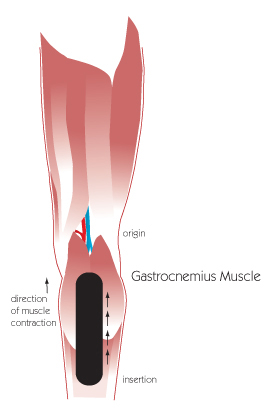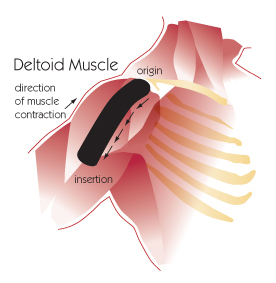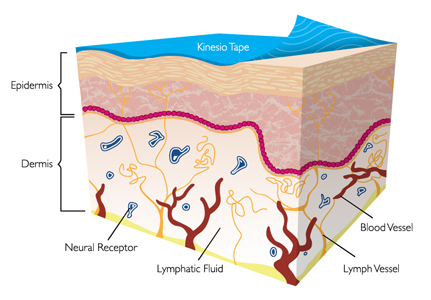What is Kinesio Taping?
The Kinesio Taping® Method has taken the Rehabilitation and Sports Medicine world by storm. This amazing taping method was developed by Dr. Kenzo Kase over 25 years ago in Japan. Kinesio Taping® has quickly become the gold, or should we say "platinum" standard, for therapeutic rehabilitative taping. The proprietary method of taping uses a uniquely designed and patented tape for treatment of muscular disorders and lymphedema reduction.
The Kinesio Taping® Method involves taping over and around muscles in order to assist and give support or to prevent over-contraction. The first technique gives the practitioner the opportunity to actually give support while maintaining full range of motion. This enables the individual to participate in their normal physical activity with functional assistance. The second technique, which is most commonly used in the acute stage of rehabilitation, helps prevent overuse or over-contraction and helps provide facilitation of lymph flow for an entire 24 hour period. Correctional techniques include mechanical, lymphatic, ligament/tendon, fascia, space and functional. Kinesio Tex® Tape can be used in conjunction with other therapies, including cryotherapy, hydrotherapy, massage therapy, and electrical stimulation.
Kinesio Taping® affects the activation of the neurological system, the body's information processor and the circulatory system. Muscles are not only attributed to the movements of the body, but they also control the circulation of venous and lymph flows, body temperature, etc. Therefore, the failure of the muscles to function properly induces various kinds of symptoms. Consequently, more attention was given to the importance of muscle function, that the idea of treating the muscles in order to activate the body's own healing process came about.
Using an elastic tape, such as Kinesio Tex® Tape, it was discovered that muscles and other tissues could be helped by outside assistance. Employment of Kinesio Taping® creates a completely new and innovative approach to treating nerves, muscles and organs.
Since the introduction of Kinesio Taping® into the US, medical practitioners from PTs, ATCs, OTs, DCs, MTs, to MDs have recognized and embraced this effective, safe and best of all, easy-to-use modality. The method and tape allow the individual to receive the therapeutic benefits 24 hours per day with both comfort and ease, because it can be worn for several days per application. Currently, Kinesio Taping® is used in hospitals, clinics, high schools and by professional sports teams.
How Does Kinesio Tape Work?
When properly applied, you don’t even know the tape is there. The practitioner places it on slightly stretched skin from one end of the muscle to the other, with varying amounts of stretch to the tape. For muscle support/facilitation, the tape is applied from the muscle origin to the muscle insertion. For rehabilitation or muscular inhibition, it goes on just the opposite.
The taping technique is based on the body’s own natural healing process. Rather than “strap down” the muscle, the philosophy is to give free range of motion and allow the body’s own muscular system to heal itself bio-mechanically.
Application of Kinesio Tape encourages muscles to function as they would if they didn't need the tape, which improves not only body movement but circulation of venous and lymph flows, body temperature, etc. Pretty simple, but it makes perfect sense. There is, I believe, a psychological aspect as well. If your sore muscles and bones are supported and allowed to heal, you are not in as much pain and you relax. Your performance improves along with faster healing.
Who would think that strategically placed elastic athletic tape would make any difference in the healing process, or athletic performance, for that matter? Well, it seems to work in a whole lot of ways. Kinesio Tape is effective in relieving carpal tunnel, arthritis, plantar fasciitis, shoulder pain, muscular facilitation or inhibition in pediatric patients, lower back strain/pain (subluxations, herniated disc), knee conditions, hamstring, groin injury, rotator cuff injury, whiplash, tennis elbow, patella tracking, pre- and post-surgical edema, ankle sprains, athletic preventative injury method, and as a support method.
Price varies per application, because it depends on the amount of time and tape. Also, it does not adhere to massage lotions, so area must be cleaned, or booked as a separate appointment.


